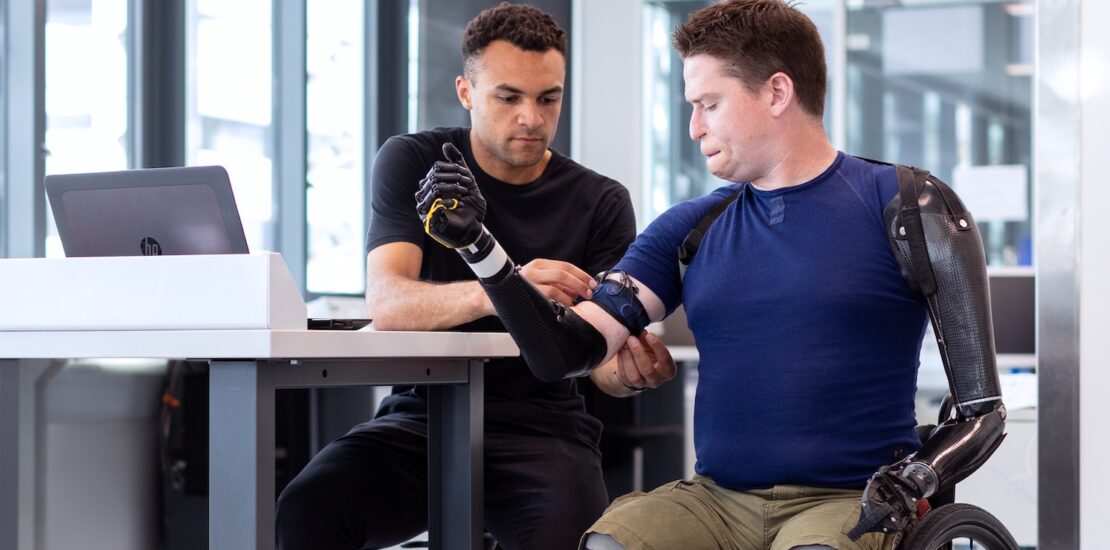The Role of Technology in the Future of Healthcare and Wellness
- March 1, 2023
- Posted by: Greatwell
- Category: Health Tech

Technology has been transforming every aspect of our lives, and the healthcare and wellness industry is no exception. From telemedicine to wearables, technology has been revolutionizing the way we access and manage healthcare services. In this blog, we will explore the role of technology in the future of healthcare and wellness, and how it is shaping the industry. We will also discuss the potential benefits and challenges associated with these technological advancements.
Telemedicine: Telemedicine refers to the use of technology to provide healthcare services remotely. It allows patients to receive medical care from the comfort of their own homes, reducing the need for physical visits to the doctor’s office. Telemedicine has become increasingly popular during the COVID-19 pandemic, as it helps to minimize the risk of infection and ensures that patients still receive necessary medical care.
Telemedicine has several advantages, including:
Increased access to healthcare services for patients in remote areas or with mobility issues
Improved patient outcomes through early detection and treatment
Reduced healthcare costs by eliminating the need for physical visits to the doctor’s office
However, telemedicine also has its challenges, such as:
The need for reliable and secure internet access
The potential for misdiagnosis or lack of physical examination
Limited availability of telemedicine services in certain areas or for certain medical conditions
Wearable Technology: Wearable technology, such as fitness trackers and smartwatches, has become increasingly popular in recent years. These devices can monitor various health metrics, including heart rate, sleep patterns, and physical activity levels. This data can be used by patients and healthcare providers to track progress towards health goals, identify potential health issues, and adjust treatment plans accordingly.
Wearable technology has several benefits, including:
Improved patient engagement and motivation through personalized feedback and goal tracking
Early detection of health issues through continuous monitoring
Improved communication and collaboration between patients and healthcare providers
However, wearable technology also has its challenges, such as:
The need for patients to consistently wear and use the devices for accurate data collection
The potential for data privacy concerns and security risks
Limited accuracy of certain metrics, such as calorie tracking and sleep monitoring
Electronic Health Records (EHRs): Electronic health records (EHRs) are digital versions of patient medical records that are stored in a secure database. EHRs provide healthcare providers with easy access to patient information, including medical history, medications, and test results. This can help to improve patient outcomes by ensuring that healthcare providers have access to accurate and up-to-date information.
EHRs have several benefits, including:
Improved coordination and communication between healthcare providers
Enhanced patient safety through accurate and complete medical records
Increased efficiency through streamlined data collection and analysis
However, EHRs also have their challenges, such as:
The potential for data breaches and security risks
The need for standardized data collection and storage practices to ensure accuracy and compatibility
The potential for information overload and difficulty in finding relevant information
Artificial Intelligence (AI) : Artificial intelligence (AI) is making significant advancements in healthcare, including the development of intelligent medical devices and the use of machine learning to analyze patient data. AI has the potential to revolutionize the way healthcare is delivered by improving diagnosis accuracy, predicting patient outcomes, and identifying treatment options. AI can also help healthcare providers make more informed decisions by analyzing large amounts of data and identifying patterns that might not be apparent to human analysts.
Virtual Reality (VR) : Virtual reality (VR) is a technology that allows users to experience a simulated environment. In healthcare, VR can be used to treat a variety of conditions, including chronic pain, anxiety, and PTSD. It can also be used for medical training and simulation, allowing healthcare providers to practice procedures in a safe and controlled environment. VR is still in the early stages of development in healthcare, but it has the potential to revolutionize patient care in the future.
Technology is rapidly changing the healthcare and wellness industry. From telehealth to AI, the advancements in technology are improving patient outcomes, increasing access to care, and transforming the way healthcare is delivered. As healthcare providers and wellness companies continue to incorporate technology into their practices, patients can expect to see improved quality of care, increased efficiency, and a greater focus on prevention and wellness.
2 Comments
Leave a Reply Cancel reply
Contact us at the Greatwell Global Consulting Pte Ltd office nearest to you or submit a business inquiry online.

Itís nearly impossible to find well-informed people in this particular topic, but you seem like you know what youíre talking about! Thanks
Hi Robbie, thank you so much for your kind support! Do continue to drop by our website for our latest blog updates.